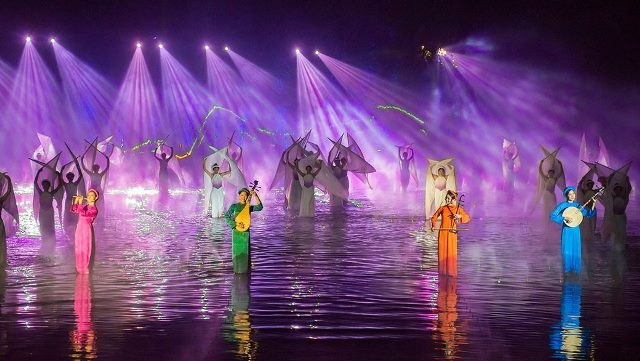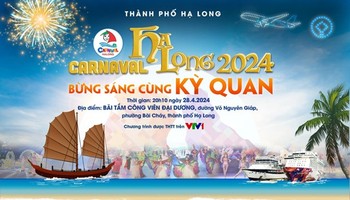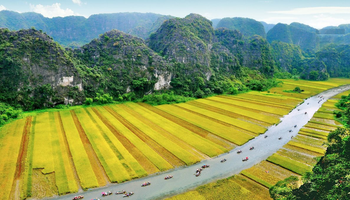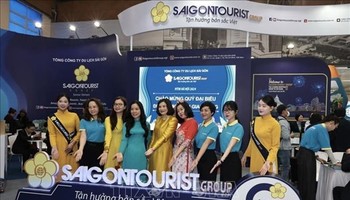Currently, the strong development of the tourism industry has made the number of visitors in many countries, including Vietnam, constantly increase. This situation is praiseworthy, but also requires frequent innovation from the tourism industry in finding new destinations and making unique experiences to attract tourists, thereby helping boost the sector’s growth towards stable and sustainable development.
The combination of tourism and theatre has been considered a new direction for a range of travel businesses, promising to bring about positive effects. Under this combination, two benefits can be seen immediately. Firstly, a dynamic and modern stage model based on crystallising the characteristics of the national culture would contribute effectively in promoting tourism of each country. Meanwhile, through tourism, theatre genres would be expanded to a large number of the audience, and artists would have more space to be creative.
In fact, over the past years, many art forms, including the stage, have contributed significantly to the success of the tourism industry in many countries. In some countries, the stage has been chosen as the key to serve tourists, reflected in the art performances that are the main theme of the tours. Evidence for that can be seen through the fact that many tourists buy tours to enjoy ballet in Russia, Noh drama in Japan, Peking opera in China or Cabaret performances in Thailand.
In Vietnam, in the design of tours, besides the linking with historical monuments and scenic spots, some travel businesses have added enjoying the traditional theatre arts, such as cai luong (reformed opera) and don ca tai tu (Southern amateur music) in the Mekong Delta, tuong (classical) drama in Binh Dinh, ca kich (traditional royal theatre) in Hue, bai choi (singing while playing cards) singing in Quang Nam, xoan (spring) singing in Phu Tho and quan ho (love duet singing) in Bac Ninh, in their tours. Recently, the two unique art programmes that have attracted the attention of many domestic and foreign tourists are the Tinh hoa Bac Bo (Quintessence of Tonkin) in Hanoi and the Ky uc Hoi An (Hoi An Memories) show in Quang Nam.
 |
The impressive stage of the “Ky uc Hoi An” show in Quang Nam. (Photo: vcnewsnetwork.com)
The common feature of these two programmes is the use of scene design and stage lighting which is elaborately choreographed with the combination of both traditional and modern arts, under the effective support of sound and lighting that impress the audience. Through these shows, visitors not only enjoy a variety of unique traditional arts but also have the opportunity to understand and love the destinations’ culture.
The new direction is expected to soon bring about high efficiency in practice, contributing to promoting the strong development of the tourism and theatre, thereby making a positive contribution in promoting the image of the Vietnamese country and the people to the world.
However, it must be acknowledged frankly that, at present, the travel agencies' introduction of art performances on their tours is still largely in a spontaneous and fragmented manner with a range of limitations, resulting in a quite monotonous and unattractive content. From such a situation, there must be a methodical strategy to make the combination of tourism and theatre more effective.
For the tourism industry, experts have suggested to proactively "order" the art units and tourism agencies in enhancing the integration of artistic enjoyment activities in organising their tours. On the artists' side, there is a need to constantly innovate thinking to build high-quality art programmes imbued with national identities, while being able to adapt to all conditions to perform well in serving the public with different audience types.
















